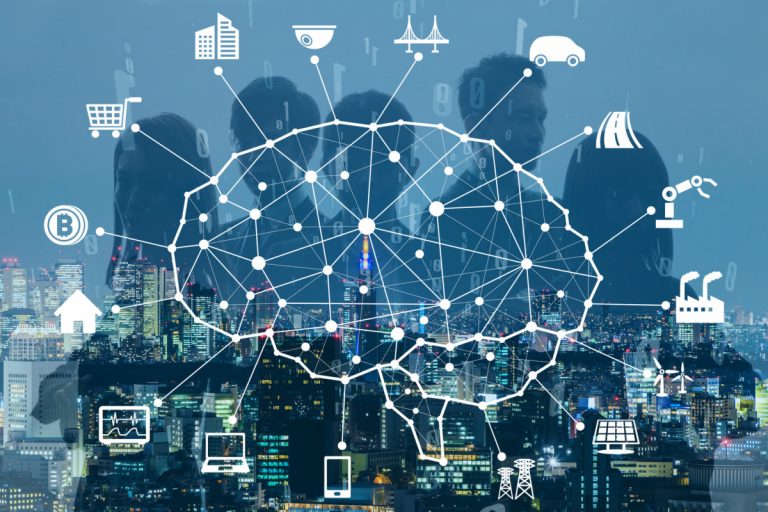Erkin BAŇěYńįńěńįT ‚Äď GAMA Holding Information Director

Recently, the most common terms for technological developments have been “Digital Transformation” and “Digital Destruction”. In the third quarter of the society and institutions, Digital transformation, which we define as the transition from the industrial revolution to the 4th industrial revolution, can also be defined as the use of up-to-date digital technologies in traditional business processes (production, sale of goods and services, etc.), the radical change of existing business processes/models and the emergence of new digital products and services.
Digital Destruction is the impact of the Fourth Industrial Revolution on the public and private sectors. Digital technology, which is becoming more and more widespread and cheaper, is leading to a widespread change in industrial, economic and social areas.
Based on the fact that digital clocks began to be used in the 1970s and the first digital computers developed by IBM were used in the Apollo mission, which was NASA’s manned round trip to the moon program in the 1960s, digital transformation actually emerges as a long-standing development. Therefore, in order to give a stronger definition to the term ‚ÄúDigital Transformation‚ÄĚ, it would be right to frame it through the concept of industrial revolutions and in the context of a wider change that affects our lives. In order to better understand Industrial Revolution 4.0, it is necessary to look at the 3 Industrial revolutions that human beings have experienced from past to present.
Industrial Revolutions
The Industrial Revolution, or Industrial Revolution, is the process of transition in modern history from an economy based on agriculture and handicrafts to an economy dominated by the manufacture of machinery that exploits industry and steam power. This transition process first began in England in the 18th century (18th-19th centuries) and from there spread all over the world.
The Industrial Revolution was an industrial transformation that took place from the late 1800s until the First World War. The triggering tools of this transformation, in which iron and steel raw materials became widespread and contributed to the development of heavy industry, were mass production techniques (e.g. Ford Model T Henry Ford, the world’s first mass production car), electric power and internal combustion engines.
The Industrial Revolution is the transformation triggered by the introduction of computer and communication technologies (internet) in production that began in the 1980s.
The country that pioneered the Industrial Revolution is Germany. Launched for the first time at the International Hannover Industry and Industry Fair in 2011, the Industrial Revolution 4.0 aimed to produce smart products in smart factories by using Artificial Intelligence, Internet of Things, Big Data, 3-D printers, Robot and Automation technologies more. One of the most important factors in the emergence of the Industrial Revolution 4.0, which includes more than one different technological elements, can be revealed as the increase in the ability of computers to perform more operations (Computing Capacity) at low cost. As a supporting example of this factor, we can see that machine learning technologies such as Artificial Intelligence existed many years ago, but their use is not as widespread as it is today.
Planning Digital Transformation
In the process of digital transformation, each sector and each company may have its own needs and 4. The Industrial Revolution requires a new digital transformation strategy under the leadership of the company management, in which strategic opportunities and strengths are transformed into digital ideas in line with the objectives.
When we examine the digital transformation projects that companies have successfully completed, we see that such large-scale transformation/changes are considered as more than one project (Project Portfolio Management), iterative project methodologies such as Lean Startup or Agile are used for each project, so that the risk and recycling of each project are evaluated separately, and the risks in the probability of failure of digital transformation projects are minimized with such methods.
On the other hand, it is more challenging than technological transformation to manage such big changes successfully. Therefore, it is vital to determine the correct and effective change management model according to the structure of the organization (organic, non-organic, etc.) and apply this model with strong change leaders determined in a disciplined manner.
In order to structure the digital transformation process sustainably, the entrepreneurial mindset needs to be created throughout the company. Google uses the following formula (70-20-10 employee capacity ratio) to systematically uncover new business ideas by adding them to the daily work of employees. The destructive ideas (e.g. ideas containing Artificial Intelligence technology) are evaluated and tested and then revealed as products/services.
- Employees allocate 70% of their capacity to their main field of activity.
- Employees allocate 20% of their capacity to projects related to their main fields of activity.
- Employees allocate 10% of their capacity to unleash new and disruptive business ideas independent of their jobs.
Economic and Social Effects of Artificial Intelligence
Artificial intelligence can be defined as systems that can continuously improve themselves thanks to the one-to-one imitation of human behavior by a computer or any hardware through computer software and the information they collect. Artificial intelligence will undoubtedly have profound and devastating consequences for both society and the economy. According to PWC’s 2017 study, global GDP is projected to increase by $15 trillion by 2030, depending on artificial intelligence. It is estimated that half of this increase will consist of productivity improvements in the workforce and the other half will consist of increasing consumer demands.
History shows that the big change represented by artificial intelligence was initially met with fear and suspicion, and eventually, as usual, such devastating changes led to mass adoption.
Many professions will disappear with the spread of artificial intelligence. Accordingly, developing the capabilities of the existing workforce and adapting them to the needs of the artificial intelligence age will become a really challenging social problem. However, many new professions will emerge.
About 40percent of all jobs in the financial services industry could be done by software robots by 2030.
Between 40 and 50percent of jobs in the manufacturing, shipping and retail sectors could be done by hardware or software robots by 2030.
- Even robots can take on their tasks in the manufacturing sector with 3D printers.
- Blockchain will eliminate the need for intermediaries in financial transactions. According to the World Economic Forum, 10percent of GDP will be driven by blockchain by 2030.
Undoubtedly, as in the Industrial Revolutions we have experienced in the past, many companies/institutions that cannot adapt to the Industrial Revolution 4.0 will be eliminated. Based on the fact that an average of 70 percentof digital transformation efforts have resulted in failure, considering the speed of this devastating change and after a detailed analysis of the needs of the transformation, planning should be at the top of our to-do list, both as individuals and as institutions.
References
Digital Transformation
Survive and Thrive in Era of Mass Extinction
Thomas M. Siebel
Why Digital Transformations Fail
The Suprising Disciplines of How to Take Off and Stay Ahead
Tony Saldanha




